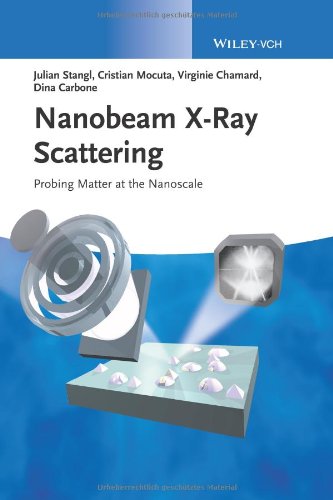

Most ebook files are in PDF format, so you can easily read them using various software such as Foxit Reader or directly on the Google Chrome browser.
Some ebook files are released by publishers in other formats such as .awz, .mobi, .epub, .fb2, etc. You may need to install specific software to read these formats on mobile/PC, such as Calibre.
Please read the tutorial at this link. https://ebooknice.com/page/post?id=faq
We offer FREE conversion to the popular formats you request; however, this may take some time. Therefore, right after payment, please email us, and we will try to provide the service as quickly as possible.
For some exceptional file formats or broken links (if any), please refrain from opening any disputes. Instead, email us first, and we will try to assist within a maximum of 6 hours.
EbookNice Team

Status:
Available5.0
20 reviews

ISBN 10: 3527410775
ISBN 13: 978-3527410774
Author: Dr. Julian Stangl, Dr. Cristian Mocuta, Dr. Virginie Chamard, Dr. Dina Carbone
INTRODUCTION
X-RAY DIFFRACTION PRINCIPLES
Introduction
Beam Coherence
Specific Properties of Different Sources: Laboratory vs Synchrotron vs FEL
FOCUSING OF X-RAYS
Beam Propagation and Modeling
Focusing Principles Available for the Hard X-Ray Regime
Classic Microfocusing Devices
Practical Issues
SCATTERING EXPERIMENTS USING NANOBEAMS
From the Ensemble Average Approach Towards the Single Nanostructure Study
Diffraction from Single Nanostructures
Scanning X-Ray Diffraction Microscopy
Other Types of Contrast
Local X-Ray Probe Experiments from Organic Samples
Local X-Ray Probe Experiments from Biological Samples
NANOBEAM DIFFRACTION SETUPS
Beam Positioning on the Nanoscale
Stability Issues: Maintaining the Spot on the Sample During Scanning Angles, Vibrations
Active Systems to Maintain the Beam Position on the Sample Constant
Restriction of Different Setups
Detector Issues: Resolution in Real and Reciprocal Space, Dynamic Range, Time Resolution
SPECTROSCOPIC TECHNIQUES USING FOCUSED BEAMS
Micro/Nano-EXAFS, XANES, Fluorescence
A Side Glance on Soft X-Ray Applications
COHERENT DIFFRACTION
More on Coherence Properties of Focused X-Ray Beams
The Use of Phase Retrieval Instead of Modeling Approaches
Different Retrieval Algorithms
Shape Determination of Single Structures (Retrieving the Modulus of Electron Density)
Strain Determination (Retrieving the Phase of Electron Density)
Fresnel Coherent Diffractive Imaging
Holographic Approaches (Using a Reference Wave Instead of Numerical Phase Retrieval)
Ptychography (For Extended Objects with Nanoscale Structure)
Particular Advantages and Problems when Using Coherent Diffraction Imaging in the Bragg Case
THE POTENTIAL AND THE LIMITS OF THE METHOD
Limits in Beam Size
Limits in Intensity/Brilliance
Resolution Limits in Real and Reciprocal Space
Combinations with Other Local Probe Techniques
FUTURE DEVELOPMENTS
Detector Developments
Beamlines at Third Generation Synchrotron Sources
The Role of Free Electron Lasers
nanobeam x ray scattering probing matter
x-ray nanobeam diffraction
nanoparticle scattering
scattering x-ray beam
a target bombarded with x-rays can emit
Tags: Julian Stangl, Cristian Mocuta, Virginie Chamard, Dina Carbone, Nanobeam, X Ray Scattering, Probing, Matter, Nanoscale